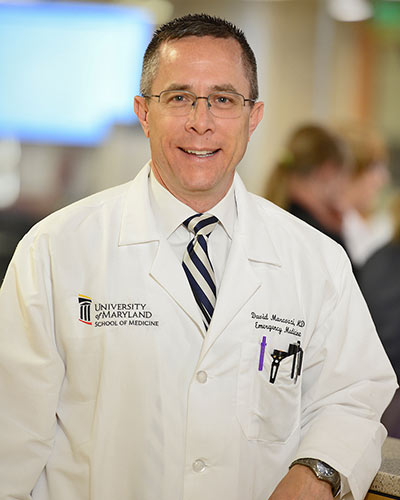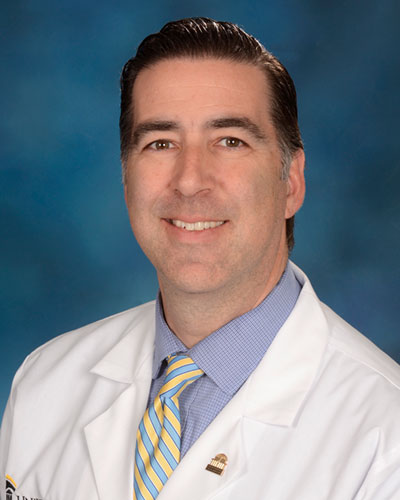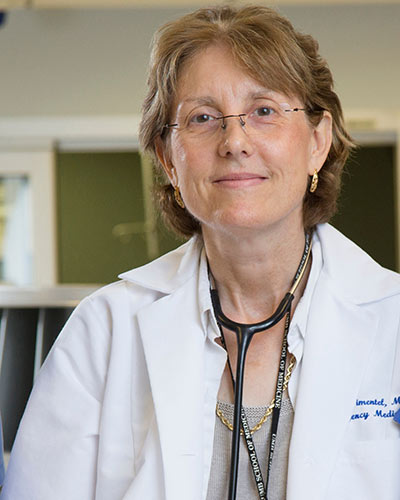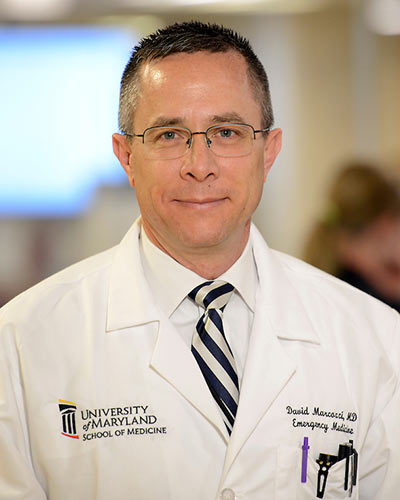October 20, 2017 | David Kohn

Figures Are Even Higher For Minorities and Women
In the first study to quantify the contribution of emergency department care to overall U.S. health care, researchers at the University of Maryland School of Medicine (UMSOM) have found that nearly half of all US hospital-associated medical care is delivered by emergency departments. The paper highlights the major role played by emergency care in health care in the U.S. In recent years, the percentage of care delivered by emergency departments has grown significantly.
“I was stunned by the results. This really helps us better understand health care in this country. This research underscores the fact that emergency departments are critical to our nation’s healthcare delivery system.” said David Marcozzi, MD, MHS-CL, FACEP, an associate professor in the UMSOM Department of Emergency Medicine, and co-director of the UMSOM Program in Health Disparities and Population Health. “Patients seek care in emergency departments for many reasons. The data might suggest that emergency care provides the type of care that individuals actually want or need, 24 hours a day.”
Although he now focuses on population health, Dr. Marcozzi is an emergency medicine faculty physician himself, and works one or two days a week in the University of Maryland Medical Center emergency department, treating patients.
This is the first study to quantify the contribution of emergency department care to overall U.S. hospital-associated health care. The paper appears in the latest issue of International Journal for Health Services.
For this study, Dr. Marcozzi and his colleagues examined publicly available data from several national healthcare databases, which covered all 50 states and the District of Columbia. They studied the period between 1996 and 2010.
For 2010, the most recent year examined, the study found that there were nearly 130 million emergency department visits, compared with almost 101 million outpatient visits and nearly 39 million inpatient visits. Inpatient visits typically involve a hospital stay, but are planned ahead, as opposed to emergency department visits, which are generally at least somewhat unexpected.
Over the 14-year period of the study, more than 3.5 billion health care contacts associated with hospitals – emergency department visits, outpatient visits, and hospital admissions took place. Over that time, emergency care visits increased by nearly 44 percent. Outpatient visits accounted for nearly 38 percent of contacts. Inpatient care accounted for almost 15 percent of visits.
Contact
Department of Anesthesiology
(410) 328-6120 (phone)
(410) 328-5531 (fax)
newsletter@som.umaryland.edu
University of Maryland School of Medicine
David Kohn
Director of Medicine and Science Communications
University of Maryland School of Medicine
Office of Public Affairs
dkohn@som.umaryland.edu
(410) 706-7590
Related stories

Tuesday, February 18, 2020
Dr. Joseph Martinez Appointed Associate Dean for Medical Education and Student Experience
University of Maryland School of Medicine (UMSOM) Vice Dean for Academic Affairs James B. Kaper, PhD, along with Dean E. Albert Reece, MD, PhD, MBA, announced today that Joseph P. Martinez, MD, Associate Professor in the Departments of Emergency Medicine and Internal Medicine, has been appointed Associate Dean for Medical Education and Student Experience. The appointment became effective February 1, 2020.

Thursday, June 07, 2018
UM School of Medicine Appoints Laura Pimentel, MD, New Head of Maryland Emergency Medicine Network
Brian Browne, MD, Professor and Chair, Department of Emergency Medicine, at the University of Maryland School of Medicine (UMSOM), along with UMSOM Dean E. Albert Reece, MD, PhD, MBA, announced today that Laura Pimentel, MD, who is currently Clinical Associate Professor of Emergency Medicine and Vice President and Chief Medical Officer for the Maryland Emergency Medicine Network (MEMN), has been promoted to Chief Executive Officer of the Network.

Tuesday, June 27, 2017
University of Maryland School of Medicine Names David Marcozzi to Help Lead Health Disparities and Population Health Program
Jay S. Magaziner, PhD, MS, Hyg, professor and chair of the Department of Epidemiology and Public Health (EPH) at the University of Maryland School of Medicine (UM SOM), along with UM SOM Dean E. Albert Reece, MD, PhD, MBA, announced today that David Marcozzi, MD, MHS-CL, FACEP, an associate professor in the UM SOM Department of Emergency Medicine, has been named as Co-Director of the UM SOM Program in Health Disparities and Population Health, which is based in EPH.

 African-American patients used emergency departments at a higher rate than other groups. In 2010, this group used the emergency department almost 54 percent of the time. The rate was even higher for urban African-American patients, who used emergency care 59 percent of the time that year. Emergency department use rates in south and west were 54 percent and 56 percent, respectively. In the northeast, use was much lower, 39 percent of all visits.
African-American patients used emergency departments at a higher rate than other groups. In 2010, this group used the emergency department almost 54 percent of the time. The rate was even higher for urban African-American patients, who used emergency care 59 percent of the time that year. Emergency department use rates in south and west were 54 percent and 56 percent, respectively. In the northeast, use was much lower, 39 percent of all visits.